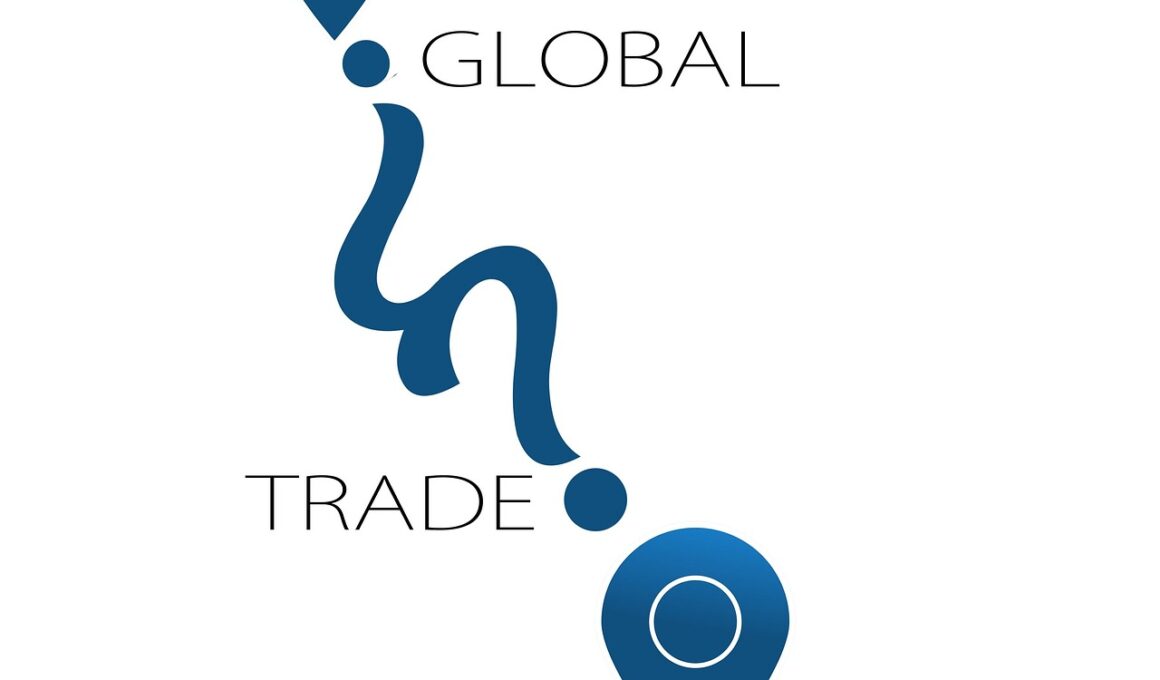Boosting Export Performance Through Targeted Trade Exhibitions
International trade is vital for economic growth as it opens doors for businesses. Among various strategies adopted to improve export performance, targeted trade exhibitions stand out as effective channels. Through these events, companies can showcase their products, gain market insights, and connect with potential buyers. Successful exhibitions allow exporters to elevate brand recognition and engage with audience members in a dynamic environment. They not only display products but also create networking opportunities, which can result in fruitful partnerships. In addition, exporters obtain valuable feedback directly from customers, which helps them understand market trends. Analytics from these events play a substantial role in future marketing efforts. Every aspect of participation, from booth design to the materials presented, must be meticulously planned. Incorporating technology, such as virtual demonstrations, can enhance engagement levels and cater to diverse audiences. In a globally interconnected world, trade exhibitions can be pivotal, making it necessary for businesses to consider how they affect their overall export strategies. Consequently, effective participation leads to informed decision-making and ultimately increases export volumes.
The Role of Trade Exhibitions in Export Strategies
Trade exhibitions serve as essential venues for promoting products and services in the international marketplace. They gather various stakeholders, including distributors, retailers, and direct consumers, fostering an atmosphere conducive to exploring opportunities. By participating in trade exhibitions, exporters not only present their offerings but also glean insights into competing brands. Networking at these events can lead to access to new markets. Establishing connections can pave the way for future contracts and partnerships. Additionally, engaging with market experts provides valuable insights into local consumer preferences, which can be tailored into product various offerings. The feedback cultures nurtured in these environments contribute to refining business practices. Exhibition attendance also builds credibility and showcases a company’s commitment to international trade. Furthermore, companies can engage directly with target audiences and hear firsthand about their preferences, which is invaluable for market research. Trade exhibitions encourage dialogue that can transform pitches into fruitful collaborations. As businesses navigate the complexities of the global marketplace, participating in targeted exhibitions can establish a solid foundation for sustainable international success.
Effective planning is crucial for making the most of trade exhibitions. The goal is to capture potential customers’ interest and excitement. To achieve this, businesses should define their objectives clearly, such as increasing sales or brand awareness. Establishing measurable goals allows the evaluation of performance post-exhibition. Selecting the right exhibition that matches the target audience is equally essential. Researching the event’s history, attendee demographics, and market reputation can help identify the best fit. Additionally, preparing compelling marketing materials such as brochures and interactive media prior to participation is essential. Training staff members effectively ensures they understand the products, the benefits, and how to interact with visitors. Adopting creative booth designs that attract attention also plays a significant role. Emphasizing unique selling propositions (USPs) during discussions is pivotal for conveying the brand’s value. Engaging presentations and product demonstrations create memorable experiences for visitors. Post-event follow-ups maintain engagement, capturing leads obtained during the exhibition. These strategies collectively enhance the likelihood of converting leads into loyal customers. In conclusion, careful planning leads to successful trade exhibition outcomes.
For exporters aiming to enhance their market reach, leveraging technology at trade exhibitions has become increasingly important. Virtual reality (VR) and augmented reality (AR) are transforming traditional interactions, allowing for immersive experiences that capture attendees’ attention. Employing digital tools not only engages visitors but also provides unique opportunities for showcasing complex products or services. Utilizing mobile applications for augmented networking can facilitate instant communication between exhibitors and attendees. These tools can gather information swiftly, enabling businesses to manage contacts effectively. Furthermore, digital marketing plays a complementary role in promoting participation before and after exhibitions. Social media campaigns can create buzz and excitement about the presence of a brand and its offerings. Live streaming events can extend the reach beyond the physical boundaries of the exhibition hall. Engaging content such as blog posts and videos can also educate potential customers about the trade showcase. Post-event analytics help assess overall effectiveness, leading to actionable strategies for improvement. By embracing technology and modern marketing techniques, exporters can maximize their investments in trade exhibitions and effectively expand their reach.
The significance of follow-ups after trade exhibitions cannot be underestimated. While obtaining leads during events is important, the effectiveness of converting those leads into customers relies on well-executed follow-up strategies. The window to act is usually short; hence, timely communication is crucial. Using personalized emails or calls to re-engage potential clients shows that the company values their interest. Sending thank-you notes can enhance brand perception and build trust. Additionally, providing additional educational materials or exclusive offers can entice interest and prompt further interaction. Tracking interactions and documenting responses is vital for gauging the effectiveness of follow-ups. Fine-tuning the techniques based on feedback ensures that future strategies yield improved results. Some businesses may benefit from segmenting the potential customer lists for tailored communication. Understanding the customers’ timeline and readiness to purchase is paramount for timing follow-ups correctly. Connecting on social media platforms can also aid in sustaining engagement and keeping a brand top-of-mind. In summary, follow-ups are a critical component of the sales funnel that significantly boosts conversion rates.
In conclusion, targeted trade exhibitions play a pivotal role in boosting export performance for businesses. By allowing brands to establish vital connections and gain market insights, these events can enhance overall sales strategies. The combination of careful planning, innovative engagement strategies, and effective follow-ups fosters a holistic approach to building brand visibility. Engaging potential customers through immersive technology and personalized interactions improves the likelihood of generating meaningful business relationships. Trade exhibitions also demonstrate a company’s commitment to international markets, thus building credibility. Therefore, businesses must adapt to the changing dynamics of international trade by embracing innovative solutions and continuously refining their exhibition strategies. Encouraging teams to stay informed about industry trends also contributes to maximizing exhibition outcomes. Knowing the latest marketing tools and consumer behaviors directs efforts in the right direction. To truly capitalize on the benefits of trade exhibitions, businesses should remain steadfast in their pursuit of deeper engagement and conversion techniques. Hence, they will be able to sustain and grow their export earnings in an increasingly competitive global marketplace.
Finally, the competitive edge gained through trade exhibitions can transform a business’s export journey. They provide profound experiences that lead to stronger relationships and enhanced understanding of market conditions. As exporters cultivate their presence on the international stage, these events offer the chance to showcase the best of what they can offer. Over time, successful participation in exhibitions not only boosts sales but also initiates brand loyalty. Effective practices implemented during these exhibitions can also translate into overall organizational improvements leading to sustained growth. Moreover, exhibiting can attract media attention that positively influences public perception. The presence at important trade events signals a proactive approach and willingness to embrace challenges in expanding market reach. Therefore, the cumulative effect of exhibiting strategically amplifies brand presence significantly. Attaining expertise in executing successful exhibition strategies enhances long-term sustainability in the trade landscape. Companies that recognize and implement the various methodologies associated with targeted exhibitions can enjoy an affluent presence in international markets. Making trade exhibitions a core element of export strategy is essential for continuous growth and optimization.


